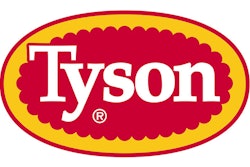Turning Ocean Plastic Into Diesel
Plastic is a growing problem polluting our oceans. There have been solutions in development like plastic-eating bacteria and edible alternative materials, as well as recycling effort to reduce the amount of excess plastic. Now, a chemist and a sailor have teamed up to turn collected plastic waste into a usable diesel fuel through a semi-portable reactor.
While many plastics are recyclable, processing them isn’t exactly green and toxic by-products are typical. Last year a team from UC Irvine and the Shanghai Institute of Organic Chemistry demonstrated a method that breaks down plastics to reusable waxes and oils without spewing more pollutants. Now the team behind the new reactor has similar goals by applying heat to “cook” material in an oxygen-less environment to break the plastic down into a hydrocarbon fuel similar to diesel.
Instead of a large-scale facility, the team is working on a mobile system that could fit on the back of a truck or on a ship. Currently the two drawbacks are the amount of plastic needed to be collected from the ocean to fuel the process and the reaction only works with certain types of plastic.
Whether or not this is a practical solution to the plastic waste problem, the team hope their reactor could at least better serve land-based recycling facilities to reduce excess waste.
SO, WHAT DO YOU THINK?
Could this help reduce landfill waste and clean up the oceans? What about having a reactor in a manufacturing setting for industrial by-product waste? Tell us what you think by leaving your comments below.
Vertical Takeoff Plane Prototype Takes Flight
Looking like something straight out of the latest sci-fi movie, a full-sized vertical take-off and landing vehicle is now one step closer to reality.
Aurora Flight Sciences has successfully completed the first stage of testing of the LightnignStrike XV-24A demonstrator vertical take-off and landing craft (VTOL). In tests, the craft showed off how it can transition between outbound and inbound flight states.
The unmanned aircraft operates with rotors that angle vertically to propel it into the air. The rotors then adjust to a horizontal alignment, similar to those on commercial jets, for faster forward motion. The XV-24A was developed with a goal to reach a top sustained flight speed of 400 knots as well as a 15 percent increase in hover efficiency over helicopters.
The U.S. Defense Department is looking for a craft that can take off and land like a helicopter but also fly as fast as a jet providing quick-strike capabilities without the need for a runway. This would allow the craft to be used in more remote locations. The program is part of requirements for Aurora’s DARPA and U.S. Air Force funding.
At just 325 pounds the demo craft is a smaller version of the full-sized concept which will weigh in at 12,000 pounds and boast a 61-foot wingspan. Now that the subscale tests have been completed, the full-scale flight test program is scheduled to begin in late 2018.
SO, WHAT DO YOU THINK?
In addition to military missions, in what ways do you see this VTOL design being used? Tell us what you think in the comments below.






















